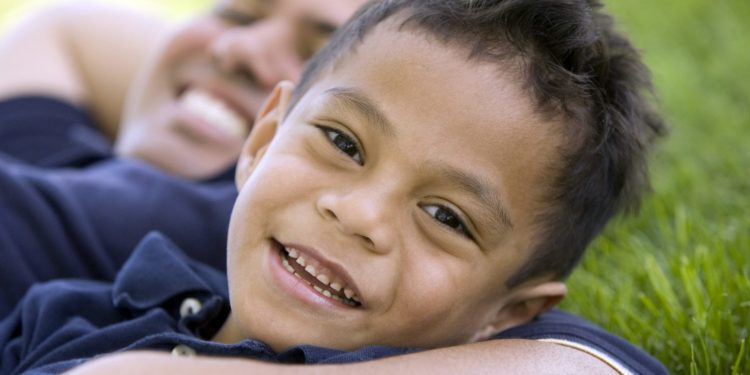Are you not sleeping because you are hungry?
This doubt appears especially in mothers who breastfeed. “I think he is left hungry. I give him the shot, he falls asleep, he doesn’t want more, so I put it in his crib and the minute he is awake! And he asks me to suckle again. It must be that I don’t have enough milk …”
This, logically, distresses mothers. And yet, the milk is most likely more than enough for this baby.
Imagine that you are warm and close to your mother (whom you already recognize perfectly, and you won’t always be close to her because she is your food). You are sucking so comfortably until you fall asleep (in the superficial sleep phase). And, suddenly, you notice that you are separated from Mom, you don’t smell her, it also seems that she is colder … so you look for her nipple, but you can’t find it!
Then the baby wakes up, cries; we pick them up again and look for the breast to go back to sleep as he did before, sucking. They are not hungry, so they are probably only suckling for a few seconds to get back to sleep. In awakenings, babies usually fall back to sleep in the way they did the last time (sucking, or with the pacifier, rocking …)
If you have doubts that your baby is eating enough, consult your pediatrician. The best indicator that a baby is eating well is that he is gaining adequate weight.
If your baby is breastfeeding, these keys will help you check that he is well-fed.
Then what do we do? How do we get them to sleep in his crib?
cradle-skewers
Unfortunately, there are no magic tricks, and each family must choose what best suits them. We can try to keep them from falling asleep completely on the breast (or taking a bottle) and leave them awake (but sleepy) in their crib so they can sleep on their own.
We can offer them the pacifier and a transition object (Dudu, stuffed animal) that we will have to remove later in small babies (remember that to prevent sudden infant death syndrome, the crib must be empty, without stuffed animals or cushions).
Sometimes, and especially at the beginning, getting them not to fall asleep while eating is downright difficult. As we have said that babies fall asleep inactive (shallow) sleep phase, we can wait 20-30 minutes until they enter the deep sleep phase before leaving them in their crib.
Also, routines always help. Around 3-4 months, they begin to distinguish day from night, and it is convenient to establish sleep routines to facilitate rest.
In the practical guide for parents of the Spanish Association of Pediatrics, you can delve into sleep in babies and read the advice they propose.
My baby sleeps with a puppy, to whom she is very attached. He takes it everywhere. We have two of the same to wash it from time to time because it does not come off. In my opinion, the cloth, the blanket or the attachment doll are good options in these cases.
Spiked cradle syndrome
Improve the room atmosphere:It is advisable to ventilate the baby’s room about five minutes before she goes to sleep. I do it every night and before a nap.
Also, the temperature must be neither too high nor too low. Twenty degrees is the most convenient.
In my case, we sleep with the heating turned down in winter. And in summer, we usually put the air conditioning on for a while before going to bed so that too much heat is not concentrated in the bedroom.
Sleepy-prone decor:Pastel tones for the room where the baby sleeps are, in my opinion, the most recommended. In addition, a pleasant decoration is essential to build a relaxing and cozy place. Imagine a room with red and black stripes for a baby. It would be so stimulated that it would be impossible for him to fall asleep.
Spiked cradle syndrome
Relaxing music :There is specific music that we can use to help babies sleep. The ideal is instrumental and slow songs or lullabies. Some classical music tracks are also a good option, as long as it is quiet.
Ambient sound:Some babies fall asleep to the sound of a hairdryer, a vacuum cleaner, or the waves of the sea, among others. It is a trick to prevent them from waking up. The ambient sound in your room isolates our children from other types of noises, which can wake them up.
Yago has a toy with ambient sound, relaxing music, and anti-fear light. I have already told you about it in the post “What to do if your baby wakes up easily.” If you have not done it already, I recommend that you read it because we expand this point and the previous one and tell you our experience, which may be useful to you. I hope you liked our post today. I invite you to visit our section on creative maternity.
But the crib seems to have spikes …
It turns out that it is time to put him to sleep; we wait to be sure that he is sound asleep, cradling him, and nothing disturbs him. It’s the moment. Stealthily we go to his room. And we leave it slowly in his crib, with the soft light, in silence. But as soon as the mattress touches his back, our little angel wakes up and starts to complain. If we insist on the idea of leaving him in the crib, he cries. Instead of having a soft mattress, the crib appears to have spikes that dig into its back.
He cries because he does not want us to get away; being separated from us means that his survival mechanisms go into alert and warn us that we are leaving them forgotten. They do not know that they are safe at home; they are still emotional and intuitive beings who need to feel safe with us.
What can we do?
Although the usual thing in our case is that the baby sleeps the first months in a bassinet or crib in the parents’ room, each family must choose what best suits them. Some families choose to put a cot for co-sleeping, and others decide to share their bed with the baby. If we consider the recommendations to avoid sudden infant death, it may also be a good solution. The baby will sleep calmer, better, and therefore the parents too.
The Association of Pediatrics recommends avoiding co-sleeping in children under three months, premature babies or smoking parents, who consume alcohol, sedative drugs or drugs; Nor should they share a bed with siblings or other family members other than the parents. Babies should sleep on a firm surface (not on sofas or armchairs), free of objects (there should be no stuffed animals or cushions, not even anti-tippers), and in a well-ventilated room with a comfortable temperature.















